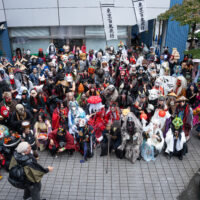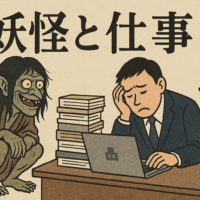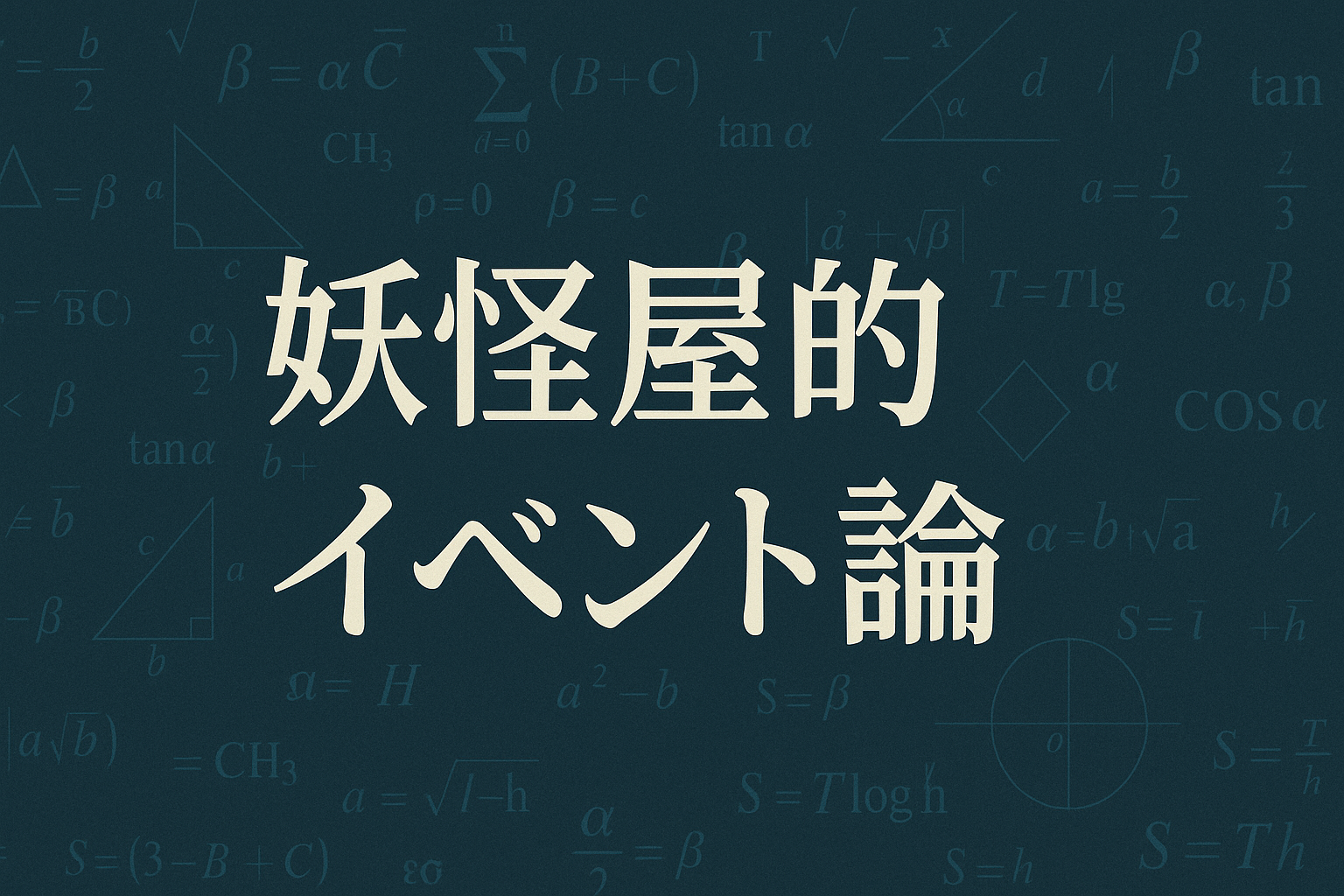
100 Scenes of Saitama's Monsters: Spirits Hiding in the Mountains, Rivers, and Sounds

Saitama Prefecture is located almost in the center of the Kanto region. Although it does not have a sea, it has a wide variety of terrain including mountains, rivers, wetlands, and plateaus, and the diversity of its environment is actually connected to the richness of yokai folklore. In this article, we will start with the "Saitama yokai" that have become a hot topic on social media, and explore the ayakashi that live in Saitama's topography and culture.
The ghosts hiding in the mountains
In the Chichibu Mountains in western Saitama, ancient beliefs and legends remain strong. One representative example is the "Yamauba." In a story handed down in Yokoze Town, a Yamauba who committed a crime was captured and tied to a pine tree with wisteria vines. In her frustration, she cursed, "Die, wisteria, die, wisteria!"
Another mountain monster that appears on mountain roads is the "Okuri-Okami" (Sending Wolf), a mysterious monster that is said to exist throughout Japan. Its folklore also remains in the Chichibu region of Saitama, and while it may attack people, it can also appear to protect those on the road. It is a mysterious monster that is both fearful and grateful.
Beings lurking in rivers and wetlands
Saitama is also blessed with large rivers. In particular, in the Minuma and Arakawa River basins, there are many deeply rooted beliefs and mystical phenomena related to water. The "Minuma Dragon God" is a prime example of this, and is a symbolic figure that is linked to the region's water resources and deification, as it is said to have brought about a curse when the Minuma reclamation project was carried out.
Kawagoe also has the legend of a "bottomless hole," one of the strange phenomena passed down as one of the "Seven Wonders of Kawagoe." There are many strange stories related to this well. For example, it is said that if a talisman is placed in the hole, it will float up to the Twin Ponds of Ryuchi Benzaiten, nearly one kilometer away, and that if garbage is placed in the well, it disappears immediately. It is also said that even if hard objects are placed in the well, there is no sound of them falling into the water or hitting the bottom. The Kawagoe area was originally a wetland, and it is not difficult to imagine that such a topography would be the fertile soil for water-related strange phenomena.
Mystery of the Village and the Road
In Saitama, where cities and countryside coexist, there are many stories of monsters that appear on roads and crossroads at night. As its name suggests, the "Yamichikai" is a mysterious entity that only appears on roads at night. However, there are actual descriptions of what it looks like, with some describing it as carrying a backpack, growing a beard and wearing tattered clothes, while others say it is dressed in white robes, carrying a lantern on its back, and wearing white tabi socks and sandals. It has also been pointed out that it may have actually been a low-ranking monk from Mount Koya known as a "Koyasan Hijiri." This entity, which overlaps with a religious figure and a monster, seems to tell us that faith and fear are two sides of the same coin.
Also, the "Sodehiki Kozo" is a small monster that tugs on the sleeves of children and travelers to scare them. It is said that it was an educational being that would encourage children to return home quickly.
Monsters born from sound
Some of the Saitama yokai have very unique names, such as "Neroha" and "Butsarobee." These are probably "sound-based yokai" that have developed from dialects, shouts, or lines of scolding.
For example, the origin of "Neroha" is thought to be the Tohoku dialect "Neroha (go to bed early)." It may have evolved from a phrase used to encourage children who stay up late to "go to bed early," and eventually came to be spoken of as a yokai in the form of "Neroha is coming."
"Butsarobee" is said to be derived from the dialect "(o)busatte yarube" (obusaru = to carry on one's back, to jump on someone). In other words, this yokai is "something that jumps on one's back" and has a frightening quality, as if an invisible presence is approaching from behind. The sound of the word combined with the name makes it very memorable.
Both of these are examples of how human voices and fears give birth to monsters.
From social media reactions
Finally, we will introduce some of the comments regarding "Saitama's monsters" posted on social media.
Person A:
The Sodehiki Kozo, the Sawa Onna, the Okami Wolf, Yana, the Yomido-kai, Okupo, the Ikusa Kesabō, the Kawa Tengu... they don't appear very often... (´・ω・`)
Person B:
Azuki Granny, River Tengu, Sleeve-pulling Boy, Sawa-onna, Yana, Chitori, Butsarobee, Okpo, Obbu, Dowamanmakowo, Fukufuku, Night Road Monster, Nebucho, Neroha, Fake Train, Dragon God of Minuma, Osaki, Daidarabocchi, Oinusama, Kesabou of Ikusa, Takebou of Sasai, Kojiro the Indigo Dyeer, Kajibou of Konuma, Mysterious Sound of Rokuchome Bridge
Person C:
Tengu, Kappa, Oitekebori, Yana, Hitotsume Kozo, Yomidokai - were the Nodera bells different?
Mr. D:
Just Okuri Okami and "Yana" (bitter smile) 😅
Mr. E:
Nebucho, Osaki, Nama Dango Buddha, Yodokai, Azuki Granny
Mr. F:
Mikoshi Nyuudo, Daidarabochi, Okuri Okami, Sodehiki Kozo, Hitotsume Kozo, Hitotsume Nyuudo, Human-faced Dog, Dragon God, Tengu, Fox, Nopperabo, Weasel, Raccoon Dog, Kirishima Station. There are areas of dragon god worship in Saitama, so I've included the dragon god in the category of yokai. Although it's not a yokai, Kirishima Station is an otherworldly station in urban legend.
Summary: Topography and words create yokai
The yokai of Saitama Prefecture may not be particularly flashy. However, the diversity of the terrain, the daily life, and the words and emotions of the people have woven together to create a rich and profound yokai culture. We would like to continue to shine a light on these "subtly rich" yokai and expand the yokai map of the whole country.







No comments yet.